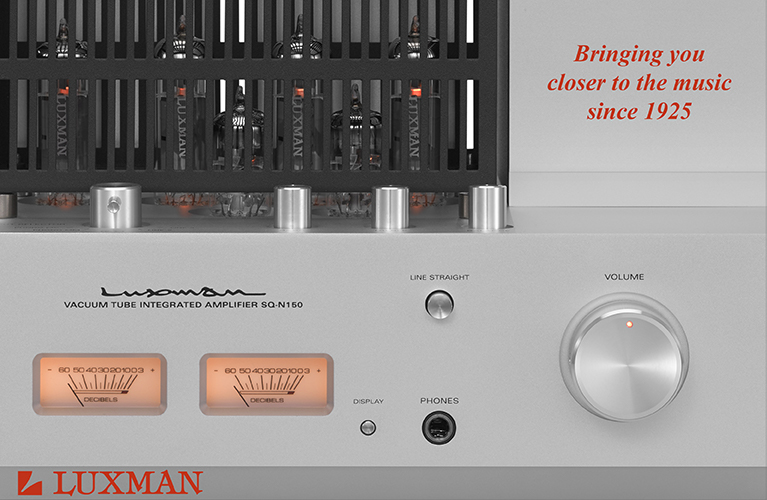Note: measurements taken in the anechoic chamber at Canada's National Research Council can be found through this link.
 KEF’s new LS50 Meta loudspeaker was released in October and sells for $1499.99/pair -- the same price the LS50, which it replaces, sold for in 2012. (All prices USD.) I was in Munich that May, at High End 2012, when the LS50 was announced; I reviewed the speaker in April 2013, and I’ve owned a pair ever since.
KEF’s new LS50 Meta loudspeaker was released in October and sells for $1499.99/pair -- the same price the LS50, which it replaces, sold for in 2012. (All prices USD.) I was in Munich that May, at High End 2012, when the LS50 was announced; I reviewed the speaker in April 2013, and I’ve owned a pair ever since.
In fact, I’ve known the LS50 so well for so long that I was torn about reviewing the LS50 Meta: Should I focus on how the LS50 Meta’s sound differs from the LS50? Or should I try to wipe the LS50 from my mind and review the Meta with a clean slate, looking at it in the context of the marketplace of 2020, not 2012? Feeling there were benefits to both approaches, here I’ve blended them.
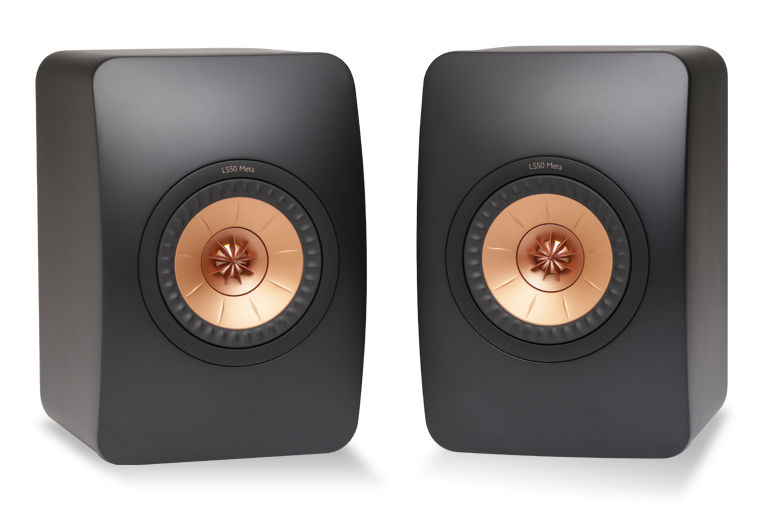
Description
The LS50 Meta has basically the same cabinet as the LS50, with different finishes (see below). It measures 12”H x 7.9”W x 12.2”D, weighs 17.2 pounds, and is made mostly of MDF. Its smooth, convex front baffle is made of a plastic composite that KEF’s cutaway diagrams show has a ribbed backside, presumably to increase its strength. Near the bottom of the rear panel is a single pair of high-quality binding posts and, in the upper left corner, a port. Like the original LS50’s, the Meta’s port has a spongy center tube to reduce resonances, but its aperture is “racetrack” shaped instead of the LS50’s true oval.
Centered on the front baffle is a 12th-generation Uni-Q driver array comprising a 1” tweeter sunk deep in the apex of a 5.25” midrange-bass driver. The original LS50 was specified to have a crossover frequency of 2.2kHz; the Meta’s drivers hand off to each other at 2.1kHz. Both driver diaphragms are made of aluminum, with shapes optimized to push their resonant modes far outside their operating bandwidths. KEF claims that the first breakup modes of the tweeters in the old and new models occur above 40kHz -- not only an octave higher than the top of the audioband (20kHz), but higher than most manufacturers achieve even with costlier beryllium-dome tweeters.
But there’s a big difference between the old and new LS50 tweeters, and it’s what the new model is named for: metamaterial, which Wikipedia defines as “any material engineered to have a property that is not found in naturally occurring materials. [Metamaterials] are made from assemblies of multiple elements fashioned from composite materials such as metals and plastics.” The new LS50 Meta’s tweeter is made using what KEF calls Metamaterial Absorption Technology (MAT).
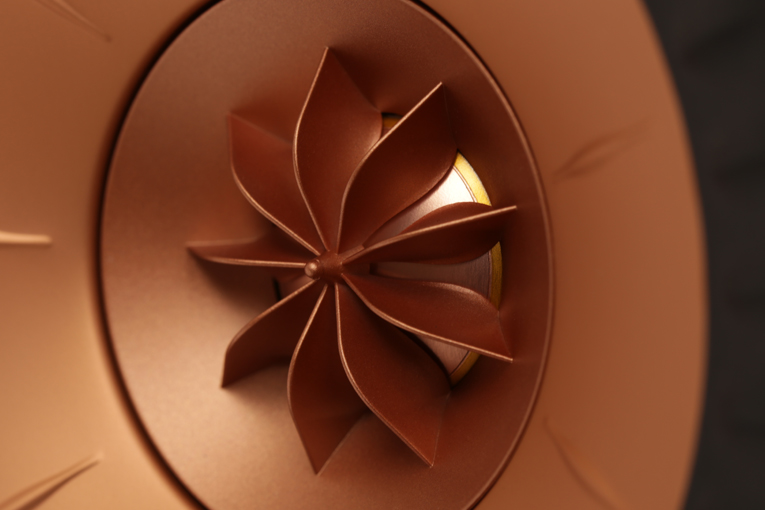
I visited KEF last March, interviewed the two brains behind MAT, and found out there’s something to it. Dr. Jack Oclee-Brown joined KEF in 2004 and is now the head of research and development; Dr. Sébastien Degraeve started there in 2018 and is a senior engineer. My interviews of the two PhDs became part of a SoundStage! InSight video that explains this technology in detail. The MAT is a small disc, about 3” in diameter and not quite 0.5” thick, attached to the back of the Uni-Q’s motor structure. Inside the motor is an opening that allows the rearward energy, or backwave, produced by the tweeter diaphragm to reach the MAT disc, which has 30 tubes optimized in size and shape to completely absorb the air traveling into it. Although the tweeter is crossed over at 2.1kHz, according to Oclee-Brown, the MAT disc “can absorb almost 100% of sound from 600Hz up to above 40kHz.”
This energy needs to be absorbed so that it’s not bounced around behind the diaphragm, then reflected forward again to interfere with and distort the front-firing wavefront directed at the listener. KEF isn’t the first company to tackle this problem. When he worked at Bowers & Wilkins, Laurence Dickie invented the tapered-tube technology that B&W debuted in 1993 in their Nautilus loudspeaker, and that has been used in their speakers ever since. Dickie left B&W to cofound Vivid Audio, which also uses tapered tubes. But KEF’s metamaterial approach is new.
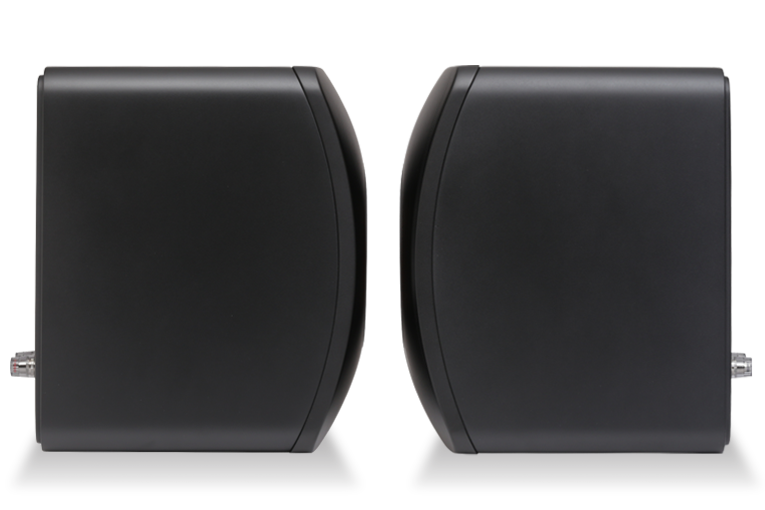
MAT isn’t the only difference between the drivers in the old and new LS50s. Since 2012, KEF has introduced various speakers, priced above and below the LS50, that have improved their Uni-Q take on the coincident or point-source driver, mainly in terms of lowering distortion. One of those improvements, the tweeter-gap damper, appeared in their latest R-series speakers and now in the LS50 Meta. It solves a problem KEF had in previous versions of the Uni-Q: the tweeter’s placement in the belly of the midrange-woofer caused changes in air pressure and thus turbulence between the two drivers that interfered with the motion of the tweeter’s dome. KEF’s designers cut a channel -- essentially, a vent -- in the motor system that also has damping material that absorbs the trapped air and lets the tweeter move more freely, unplagued by turbulence and changes in air pressure. This, KEF claims, results “in better high-frequency response, clarity and articulation.”
Despite these subtle differences, the LS50 Meta’s specifications are mostly the same as the original’s: sensitivity, 85dB/2.83V/m; nominal impedance, 8 ohms; frequency response, 79Hz-28kHz, ±3dB; frequency range, 47Hz-45kHz, -6dB; maximum output, 106dB (no distance specified); harmonic distortions of <0.4%, 175Hz-20kHz, and <0.1%, 300Hz-10kHz (both 90dB/m); and recommended amplification of 40-100W. As for the LS50’s cabinet, Oclee-Brown told me that he and his team had looked at all facets of it and could find nothing to improve on. And last March, when I first saw an LS50 Meta prototype, I was the tiniest bit disappointed that the cabinet hadn’t changed much either. But that was before I found out about the new finishes.
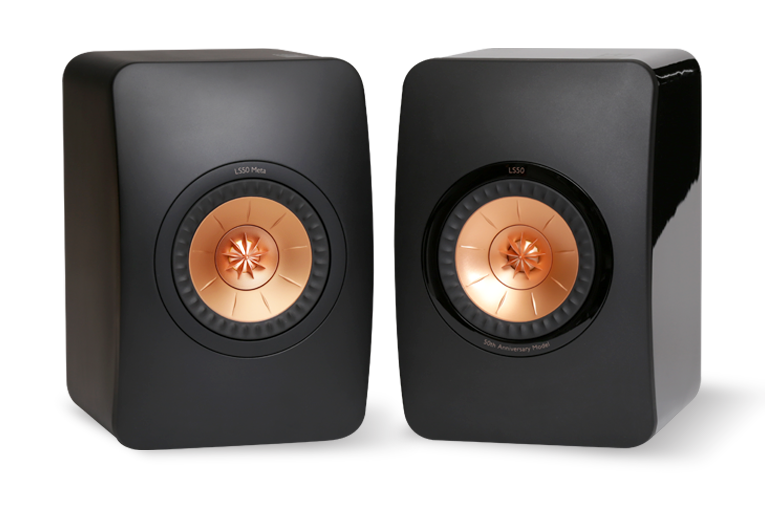
The original LS50 was available only in gloss-black paint with a matte-color baffle and a gloss-black ring around the somewhat shiny, rose-gold Uni-Q driver; in the years that followed, KEF made available a wide variety of other finishes. The LS50 Meta has been introduced with a choice of four matte finishes, including the ring around the Uni-Q and the driver itself: Royal Blue Special Edition, with blue cabinet and baffle and light-gold driver diaphragms; Mineral White, with white cabinet and baffle and rose-gold drivers; Titanium Grey, with dark-gray cabinet and baffle and deep-red drivers; and, most resembling the original model, Carbon Black, with black cabinet and baffle and rose-gold drivers.
Systems and sounds
When the LS50 Metas arrived, I set them up on the 24”-high Monoprice Monolith stands in my living room, where the components I use for my “System One” column are set up. I wanted to first try them with Hegel Music Systems’ H95 integrated amplifier-DAC, which I’d reviewed in August. The H95 is of modest power (60Wpc into 8 ohms) and price ($2000), and seemed to me to be the sort of amp many will use to drive such speakers. Plugged into one of the H95’s digital inputs (TosLink) was a Chromecast Audio streamer, and connecting KEFs to Hegel were QED XT25 speaker cables.
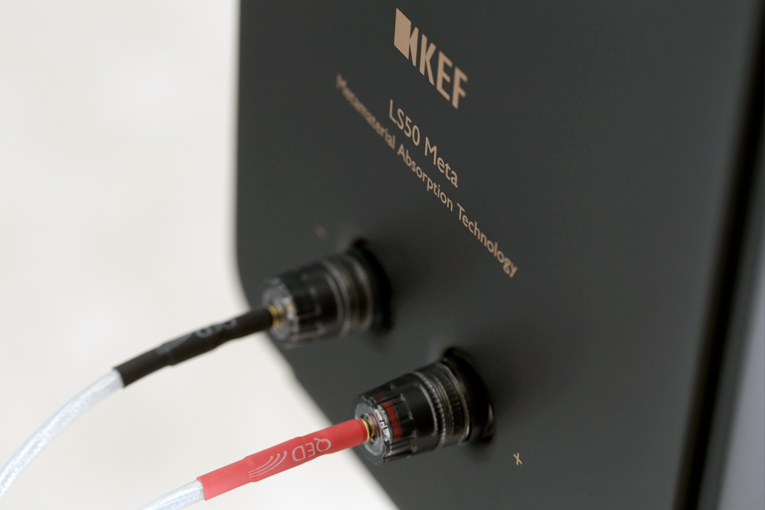
I listened casually to a wide variety of music, and noticed a few things: the bass was full and fleshed out, with extension that dipped below 50Hz, which I thought fabulous for so small a speaker. The little LS50 Metas did a really good job of projecting sound into my living room (19’L x 15’W x 8’H), and the H95 didn’t have to struggle to drive them to loud listening levels -- and they sounded clearer and more detailed in the midrange than I remembered the LS50 sounding. KEF’s spec of recommended amplification of 40-100Wpc seems on the mark, though I’d think more power would be better than less -- a sensitivity of 85dB is a bit on the low side. But this is a small two-way speaker -- while you could use an amp that delivers 100Wpc or more, you shouldn’t necessarily feed speakers all of its juice, for fear of damaging the speakers.
For more critical listening, I moved the LS50 Metas to my main listening room. This space measures 36’L x 16’W x 8’H, but I use only the front half for my system. Here I placed the LS50 Metas on 24”-high Foundation stands and drove them with Purifi Audio’s Eigentakt power amplifier, which I’ve been writing about since June. The Eigentakt isn’t directly available to consumers; I used it because its sound is fabulously transparent, and because a number of audio companies now use Purifi’s amplifier technology in their products. KEFs and Purifi were linked with Purifi speaker cables made from Cordial wires. Driving the Eigentakt was an Anthem STR preamplifier-DAC with its built-in Anthem Room Correction (ARC) turned off, connected with Crystal Cable Standard Diamond balanced interconnects (XLR). Amp and preamp were plugged into one of two Shunyata Research Venom power distributors (the other Venom is dedicated to my source components) with a mix of Shunyata power cords. An Asus UX303U laptop computer running Windows 10 and Roon, connected to the Anthem STR with an AmazonBasics USB link, delivered music files from Qobuz, Tidal, and an attached solid-state drive. I set up the speakers with their inner side panels 7’ apart, and their front baffles 8’ from my head as I sat in my listening chair.
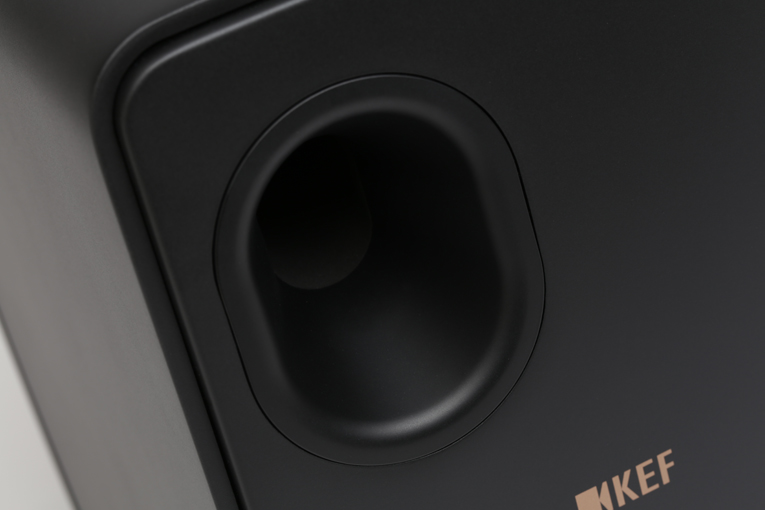
I began by streaming “Romeo Had Juliette,” from a 2020 remastering of Lou Reed’s New York (24-bit/96kHz FLAC, Sire/Qobuz). The first things I noticed were the speakers’ stellar soundstaging and imaging. The stage extended to just past the cabinets’ outer side panels; the image of Reed’s voice was positioned rock-solid at front and center, sounding as natural and detailed as I’ve heard it; the two guitars were at far left and far right on that stage, just behind the speakers, in acoustic spaces that were easy to visualize; and Fred Maher’s drums sounded set up some 15’ behind Reed, precisely carved into its own big pocket of space. Not only was the soundstage wide and deep and the images exact -- the sound was so free of the speaker cabinets that the only clues that the speakers were there were visual. Two tracks later, in “Dirty Blvd.,” the positions of voice and guitars were the same, but this time Maher’s drums didn’t sound quite as far back, which I believe accurately reflects how it was recorded. In short, soundstages were deliciously spacious, images resoundingly well defined, and soundstages extended far past the speakers.
If there was any flaw, it was that the bass, while plenty deep for such small speakers, wasn’t as extended as I’ve heard it from much larger speakers with bigger drivers -- it approached 40Hz, which is a far cry from 20Hz, the bottom of the audioband. The bass was also a little ill-defined, which was also a problem with the original LS50. This was more noticeable with “Last Great American Whale,” also from Reed’s New York, which has a fuller, richer drum sound than the two tracks already mentioned, courtesy original Velvet Underground drummer Moe Tucker, as well as Rob Wasserman’s deeper, richer bass guitar -- these instruments weren’t as tight and defined in the lows as I know them to sound. And when I cranked up the volume for “Dirty Blvd.” and the raucous “There Is No Time,” the LS50 Metas’ sound remained strikingly clean, but lacked the last bit of effortlessness that bigger speakers can convey. These limitations were a reminder that even overachieving minimonitors can be counted on to provide only so much bass extension, output, and scale. Otherwise, what I heard was tough to criticize.

Lana Del Rey’s Norman Fucking Rockwell! (16/44.1 FLAC, Interscope/Polydor), the album I’ve played more than any other this past year, revealed similar qualities -- throughout, soundstages were wide with easily definable depth, aural images were always precisely positioned in space, and the speakers themselves “disappeared” so well that, again, if I hadn’t been able see them, I’d have had a tough time pointing out their positions.
What really stuck out with Del Rey’s album was how well I could hear the intricate details of its heavily processed sound. The myriad effects used on her voice not only change from track to track, but within tracks and even within phrases. These changes, many of them subtle, were dead easy to hear through the LS50 Metas, even at very low volume levels. Some tracks are also deliberately distorted, sometimes, apparently, to mimic the sound of a badly tracked LP. The KEF LS50 Metas highlighted this as well as have any speakers I’ve listened to in the last year -- including Vivid Audio’s great Giya G2s ($50,000/pair). And on the purer-sounding, less-processed tracks, such as “Hope Is a Dangerous Thing for a Woman Like Me to Have . . . But I Have It,” Del Rey’s beautiful singing, the abundance of space and air around her voice, and the accompanying piano, were reproduced as naturally and as cleanly as I’ve heard them -- except for the deepest bass.
Obvious comparison
After I’d listened to more music through the LS50 Metas and found nothing that contradicted what I’ve said above, I brought in my original LS50s for some comparisons. “I’ve Got to See You Again,” streamed from Norah Jones’s Come Away with Me (24/192 FLAC, Blue Note/Qobuz), let me suss out the differences pretty well. Through the Metas, Jones’s piano, which begins this track, sounded a little farther back on the stage, and her keystrokes were a tiny bit cleaner -- not a big difference, but it became obvious after repeated comparisons. Then there was the violin -- Jenny Scheinman plays it throughout this track, but it’s most audible just after 2:20, when it was more prominent through the LS50s. But that prominence came with a hint of stridency the Metas didn’t have; overall, this track sounded better through the Metas.
I heard the biggest differences in the reproduction of Jones’s voice, which is front and center on every track of Come Away with Me. It sounded almost the same through the two speaker pairs, but Jones’s sibilants -- they’re how her voice was recorded -- were more emphasized through the LS50s. This got me thinking that the original LS50 has a bit more lift in certain parts of the treble. Through the Metas, her voice also sounded cleaner, less fuzzy, and its image was placed more solidly in the center of the stage. This tighter vocal image appeared on a soundstage that floated completely free of the Metas’ cabinets -- the original LS50s’ cabinets don’t “disappear” quite as completely. I never heard sounds coming directly from the LS50s’ cabinets, but when I listened intently, I could occasionally sense the cabinets’ precise positions. But things like bass and high-frequency extension, as well as scale and output, were exactly the same through both sets of speakers -- though I did think that the kick drum in “I’ve Got to See You Again,” even if it had the same weight and the same low-end extension, sounded slightly cleaner through the Metas.
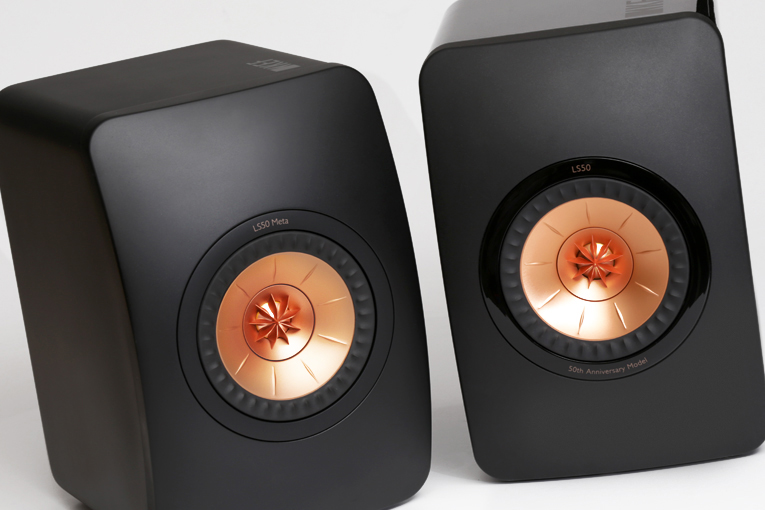
When I played the Cowboy Junkies’ The Caution Horses (16/44.1 WAV, RCA), I was at first taken aback at how much better every track sounded through the LS50 Metas: cleaner, more detailed, with soundstages freer of the speaker enclosures. The differences were more profound than with Come Away with Me, and as I continued to listen, I realized that most had to do with the recording of lead singer Margo Timmins, whose sibilants, for this album, are even more accentuated than Jones’s, and give the entire album a more splashy treble. The original LS50s spotlit that sibilance. Furthermore, the image of her voice at center stage was more diffuse than through the Metas. Likewise, Peter Timmins’s drums, which are set distinctly behind the other instruments and voices, sounded not only cleaner through the Metas, but I could more easily make out their positions and sizes.
None of the differences I heard between these two versions of the LS50 was monumental, but every one of them was in the LS50 Meta’s favor, with no downside. Bottom line: The LS50 Meta is, overall, a bit better than the original LS50.
Comparisons, insane and sane
Some think that audio products should be compared only with competitors of similar price. But KEF’s LS50 and LS50 Meta punch high, and I wanted to hear how high. I got my hands on the same pair of Focal’s Diablo Utopia Colour Evo speakers that Hans Wetzel reviewed last September for SoundStage! Ultra, and for which Jay Lee published a Take 2 on YouTube. The Diablo Utopia retails for $16,999/pair, measures 17”H x 10.2”W x 16.8”, weighs 44 pounds, has a 1” tweeter with an inverted beryllium dome, and a 6.5” midrange-woofer with a cone made of Focal’s “W” material. The Diablo Utopia is a little more than 3dB more sensitive than the Metas; to match playback levels, I had to turn the volume down when I listened to the Focals.
Lou Reed’s “Last Great American Whale” revealed that the Diablo Utopias’ bass was tighter and went deeper than the LS50 Metas’, but the difference wasn’t nearly as great as the differences in these speakers’ sizes and prices -- the Focals went maybe 5Hz deeper. Mostly, it was the Diablo’s firmness and greater detail below 100Hz that I liked, qualities that should surprise no one, given its bigger midrange-woofer and cabinet.
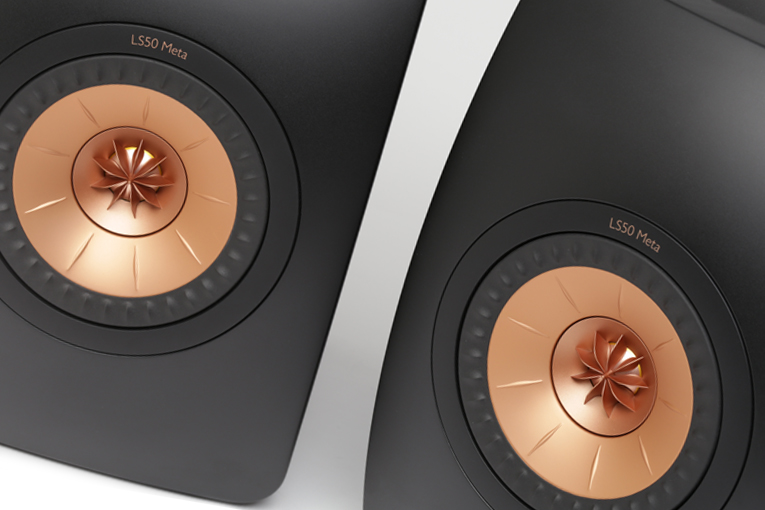
The Diablo Utopias were also a bit brighter in the top end -- with some recordings, perhaps too bright. The cymbals in Reed’s “Dirty Blvd.” were more lively, but could also be irritatingly so. The Diablos could also play louder than the Metas, but when I played the Utopias very loud, the highs bouncing around my room made them sound even brighter, which had me thinking that they’ll probably sound best in a room less lively than mine. That wasn’t a problem with the LS50 Metas.
Reed’s voice in these two tracks didn’t sound quite the same, but neither speaker strayed far from neutrality throughout the midrange. Through both, Reed’s voice sounded as it should: deeply resonant, occasionally nasal, with boatloads of detail. This is a very raw- and real-sounding recording. If anything, the Focals gave Reed’s voice a bit more body, which might have had something to do with theirincreased heft in the bass.
“Misguided Angel,” from the Cowboy Junkies’ The Trinity Session (16/44.1 FLAC, RCA), told a mostly similar story: Margo Timmins’s voice sounded similar through the two pairs of speakers, but in contrast to Reed’s voice having a bit more body, the Diablos’ elevated highs again emphasized Timmins’s sibilants. This track’s plodding bass sound couldn’t benefit from the Diablos’ faster low-end delivery, but I could more easily hear that the Focals were reaching slightly lower, and with more authority, than could the KEFs.
In terms of soundstage spaciousness, the comparison was a draw: Breadth and depth of soundstage remained on a par through the many recordings I played. But for precision of aural images, the LS50 Metas leapt ahead with hyper-focused images that few speakers can match. Judging detail was tougher -- the Diablo Utopias’ heightened treble could give a false impression of greater detail. But while the Focals thrust the treble more in my face, and their bass was tighter, when I listened carefully through the midrange and highs I didn’t feel I was hearing any more detail being unveiled than through the KEFs.
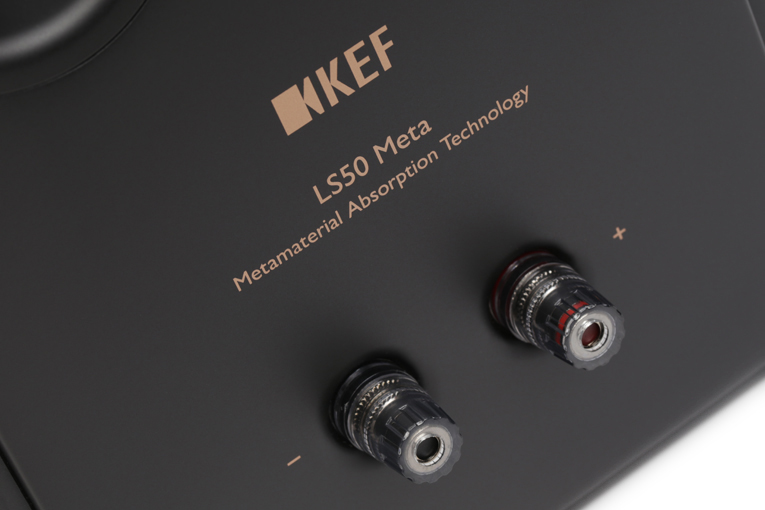
Focal’s Diablo Utopia is bigger, heavier, and far more expensive than the LS50 Meta, and does some things better: It outputs slightly deeper, punchier bass, it can play louder without strain, and its midrange is a touch meatier. But its highs are a bit hotter, its soundstaging is no better, and its imaging isn’t as precise. I could see someone with the money who likes what the Focals offer loving them -- particularly their bass and output capabilities. On the other hand, what the LS50 Meta accomplishes for less than one-tenth the price highlights why the original LS50 was such a success -- the little KEFs can’t necessarily always win in the big league, but they can play in it.
Next up was GoldenEar Technology’s Bookshelf Reference X, aka BRX. Diego Estan had just finished his review of the BRX for SoundStage! Access, published November 1, and dropped them off at my house. The BRX measures 12.125”H x 8.06”W x 12.06”D, weighs 12 pounds, and costs $1598/pair -- in every way, it’s a lot more similar to the LS50 Meta than is Focal’s Diablo Utopia Colour Evo, and many shoppers will likely compare them. The BRX has an Air Motion Transformer (AMT) tweeter and a 6.5” midrange-woofer, but instead of a port(s), its bass output is augmented by two side-mounted 6.5” passive radiators. Like the Diablo Utopia, the GoldenEars’ sensitivity is higher than the Metas’ -- this time by almost 3dB -- so I again turned down the volume when I listened to the BRXes.
In terms of appearance, your preference will depend on whether you like the BRX’s svelte angles and subtle curves or the LS50 Meta’s futuristic, staring-eyeball look. However, KEF offers more finish options than GoldenEar’s single choice of high-gloss black paint -- which, like the original LS50, now looks dated by comparison.
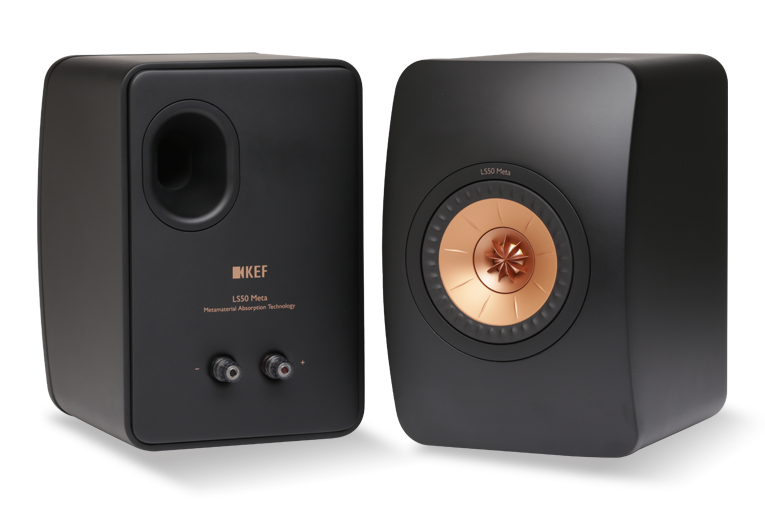
The KEFs and GoldenEars sounded more similar than different. With “Feelin’ the Same Way,” also from Norah Jones’s Come Away with Me, their bass extension was roughly the same, as were the tightness of and detail in the bass. However, the BRXes’ slightly greater upper-bass energy translated into a bit more punch with kick drum, as in Lou Reed’s “Dirty Blvd.,” though still not up to the level of the Diablo Utopias.
With “Feelin’ the Same Way,” the BRXes were able to cast just as wide and deep a soundstage as the LS50 Metas, though the specificity of aural images on those stages wasn’t as precise as through the Metas. But unlike the Focals’ highs, which were brighter than the Metas’, the BRXes’ highs were slightly duller. The Metas’ highs also sounded cleaner than the BRXes’, which were slightly ragged by comparison.
The biggest difference was in Jones’s voice, which was very tightly focused at center stage through the LS50 Metas, and through the BRXes was just as centered but more diffuse, and without as much detail and clarity. The Metas sounded more crisp through the midrange and highs than the BRXes, which made the latter sound slightly laid-back. I heard the same when I listened through both speakers to “Don’t Know Why,” the big hit from Jones’s album.
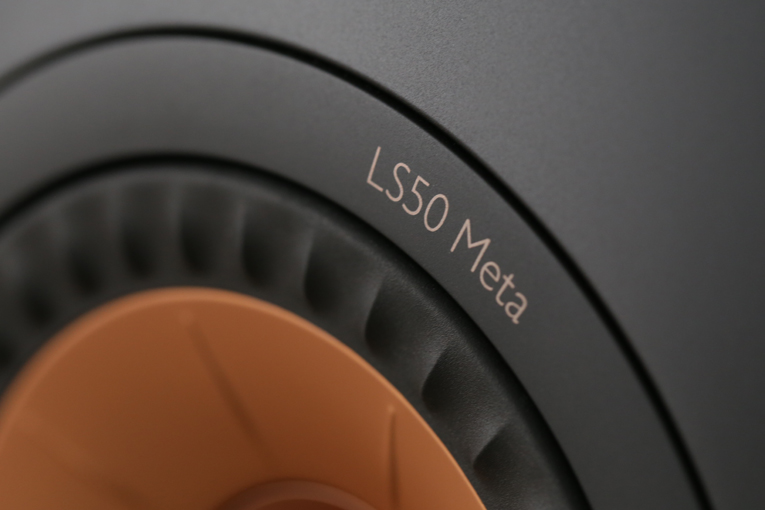
When I played “You Will Be Loved Again,” from the Cowboy Junkies’ The Caution Horses, through the Focal Diablo Utopias, they spat Margo Timmins’s sibilants straight at me -- they were just too hot. The GoldenEar BRXes, like the LS50 Metas, didn’t hide that sibilance, but they didn’t exacerbate it as the Focals did. Elsewhere in the highs, again the GoldenEars and KEFs seemed pretty close, but the BRXes lacked just a touch of HF air and cleanness. The biggest differences were in the sounds of Timmins’s voice and of the guitar that accompanies her, played by her brother Michael, who’s positioned to her right. Through the Metas, voice and guitar sounded just a touch more crisp and clean, each aural image focused more precisely on the soundstage. Similarly, when Jeff Bird’s harmonica enters at 1:16, it sounded more visceral through the Metas, which made this music sound more alive.
The more I compared these speakers, the more impressed I was by GoldenEar Technology’s Bookshelf Reference X -- as Diego concluded, the BRX is a really good speaker. Nonetheless, I ended up preferring KEF’s LS50 Metas -- the pair of them sounded more immediate, revealed more details, focused sonic images more precisely, and were cleaner through the midrange and highs.
Conclusions
If you own a pair of original KEF LS50s and love their sound, don’t expect more than an incremental increase in sound quality by replacing them with LS50 Metas. (You can, however, expect an improvement in appearance courtesy the Metas’ new, attractive, more modern-looking finishes.) The LS50 Meta sounds slightly cleaner and clearer than the original, particularly through the midrange and highs, and to a lesser extent in the bass. It also projects sound more freely from its enclosure than does the original LS50 -- as well as more freely than almost any other speaker I’ve heard. If you loved the sound of the original LS50, you’ll want to take even this small step up -- it’s all gain, no loss. After all, for most serious audiophiles, any improvement is reason enough to upgrade.
And if you have yet to own a pair of KEF LS50s of any vintage, you owe it to yourself to hear what $1500 can buy in a pair of speakers. You won’t get the deep, detailed bass or high-output effortlessness of much bigger speakers, but for most other aspects of sound, the LS50 Meta can hold its own against stand-mounted speakers of any price. That’s what made the original model such a hit from the moment of its release, and it will probably guarantee this latest version similar success. I think KEF has come up with another hit.
. . . Doug Schneider
das@soundstagenetwork.com
Associated Equipment
- Speakers -- Focal Diablo Utopia Colour EVO, GoldenEar Technology Bookshelf Reference X (BRX), KEF LS50
- Integrated amplifier-DAC -- Hegel Music Systems H95
- Preamplifier-DAC -- Anthem STR
- Power amplifier -- Purifi Audio Eigentakt
- Sources -- Asus Zenbook UX303U laptop computer running Windows 10, Roon, Qobuz, Tidal; Samsung Galaxy S10 smartphone
- Digital link -- AmazonBasics (USB)
- Analog interconnects -- Crystal Cable Standard Diamond balanced (XLR)
- Speaker cables -- Purifi Audio using Cordial CLS 425, QED XT25
- Power distributor-conditioner -- Shunyata Research Venom PS8 with Defender (2)
- Power cords -- Shunyata Research
KEF LS50 Meta Loudspeakers
Price: $1499.99 USD per pair.
Warranty: Five years parts and labor.
KEF
GP Acoustics (UK) Ltd.
Eccleston Road, Tovil
Maidstone, Kent
England ME15 6QP
UK
Phone: +44 (0)1622-672261
Fax: +44 (0)1622-750653
E-mail: support@kef.com
Website: www.kef.com
North America:
KEF
GP Acoustics (US) Ltd.
10 Timber Lane
Marlboro, NJ 07746
Phone: (732) 683-2356
Fax: (732) 683-2358
E-mail: info@kefamerica.com
Website: us.kef.com






















